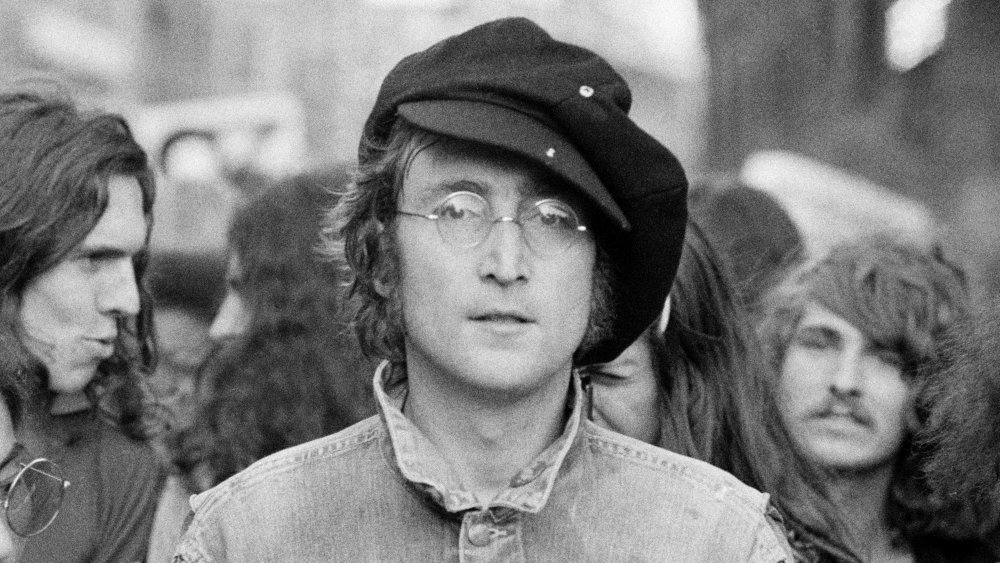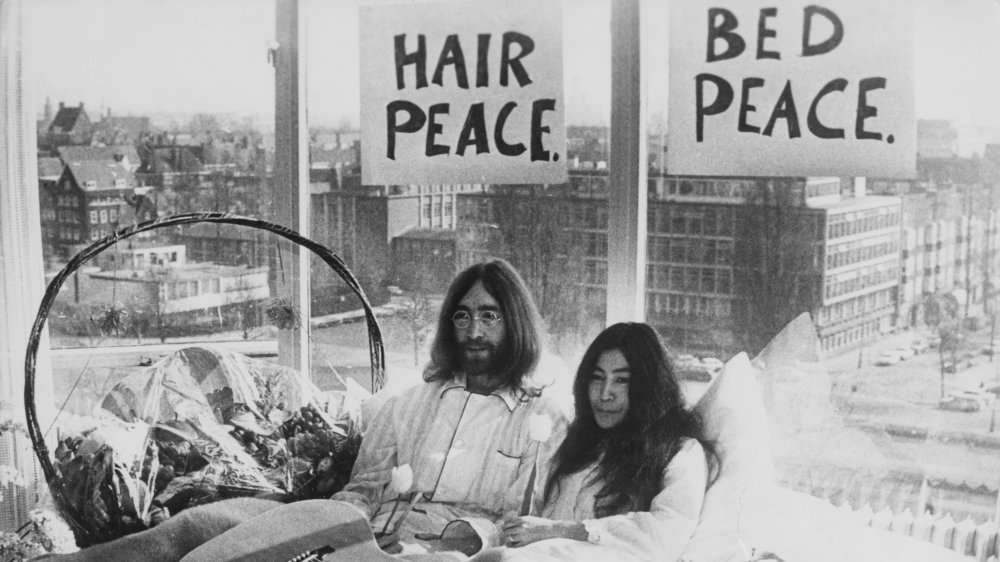The Hidden Meaning Of John Lennon's Statue Of Liberty Pictures
One of the many stand-out photographs of John Lennon has him posed before the Statue of Liberty. With the shot taken from below as to capture his whole body as well as the entirety of the statue, we see his right hand raised in a peace sign, parallelling the statue's stance. Besides simply being a very John Lennon picture, the photograph was also taken with a direct political message, which, to be fair, is also very John Lennon.
Last year, the official Instagram account of John Lennon uploaded the photo with a statement made by the photographer, Bob Gruen: "The US government was trying to deport John Lennon because of his support for the peace movement during the Vietnam war, so I suggested we take a picture at the Statue of Liberty to illustrate that America was supposed to welcome people.
Since Lennon's death, this photo has taken on a new meaning as people think of John Lennon in terms of personal freedom similar to the Statue of Liberty."⠀
While Lennon had proved to be a nuisance with his anti-war protests, the "Free John Sinclair" concert was, as Performing Songwriter put it, "what tipped the scales for [FBI] director [J. Edgar] Hoover." The former Beatles singer performed on behalf of the imprisoned poet and former manager of the MC5 who was sentenced for 10 years for marijuana possession — an excuse for a political imprisonment. Days after the concert, which drew a crowd of about 15,000 people, Sinclair was released.
Neutralize John Lennon
Now that Lennon was deemed a threat, suggestions like Strom Thurmond's "if Lennon's visa was terminated, it would be a strategic counter-measure" started to float. In released FBI documents concerning the attempt to, as again Performing Songwriter quotes, "neutralize the former member of the Beatle Singing Group." One example of this was a letter written by the New York FBI office to Acting Director Gray suggesting that if Miami police "arrested [Lennon] if at all possible on possession of narcotics charg [sic]", then "he would become more likely to be immediately deportable." Even Elvis Presley offered to help as he considered Lennon's views "un-American."
In 1972, the government decided that it could refuse Lennon a visa for the possession charge he incurred in England in 1968. Over 200 letters from figures like Bob Dylan, Joyce Carol Oates, and Jasper Johns flooded the FBI, demanding that John Lennon be let to stay. In 1975, the New York Supreme Court overturned the ruling due in part to the ACLU's charge that the government was abusing its power to silence its critics, thus operating against the first amendment. By this point, however, the FBI had lost interest in John Lennon: "Lennon appears to be radically oriented, however he does not give the impression he is a true revolutionist, since he is constantly under the influence of narcotics." After this decision, Lennon spent the last five years of his life in New York City with its Statue of Liberty.

